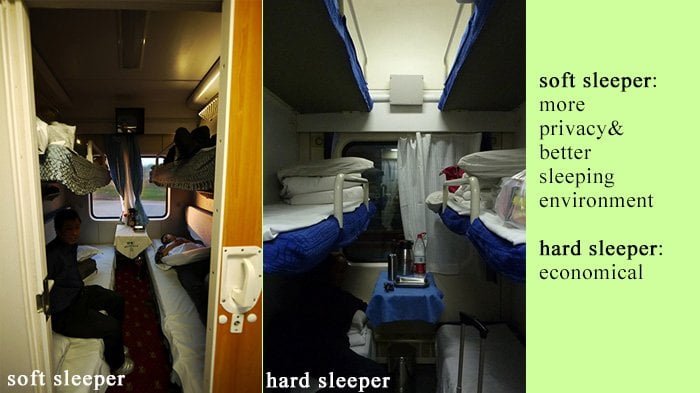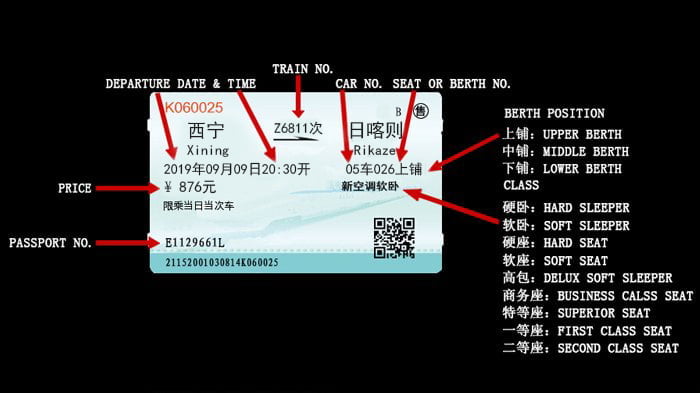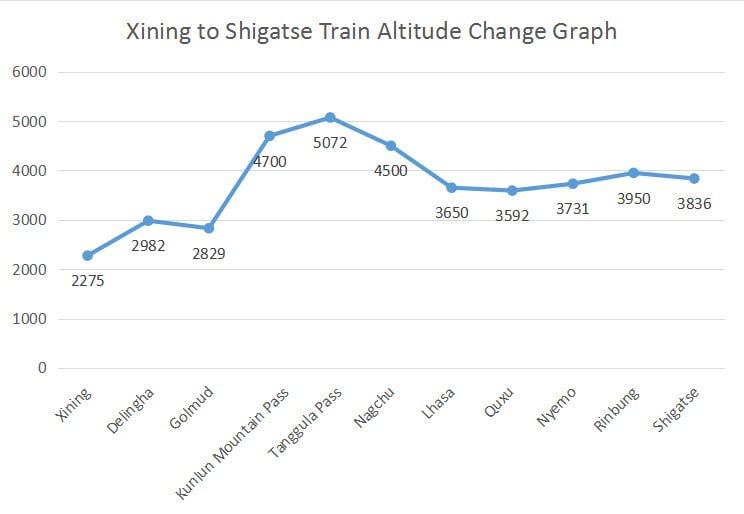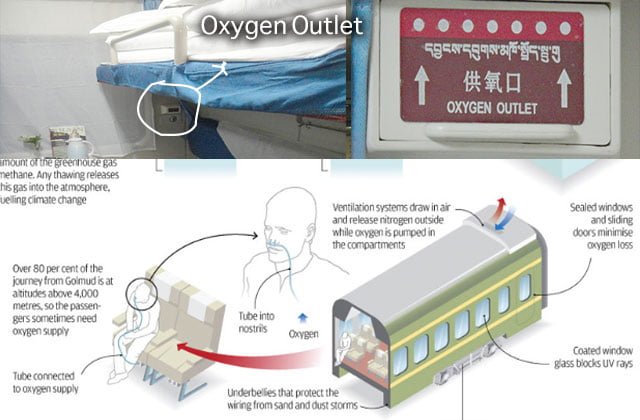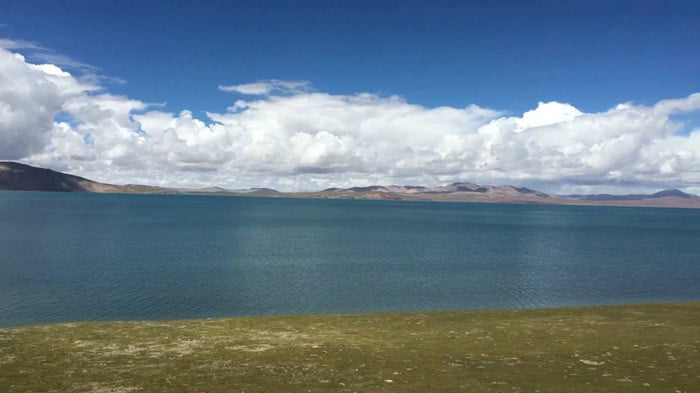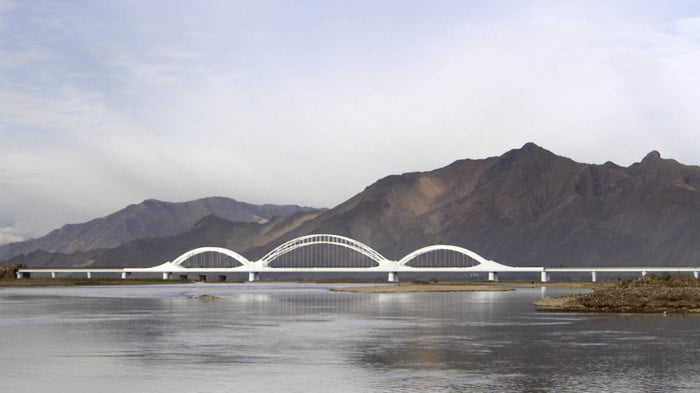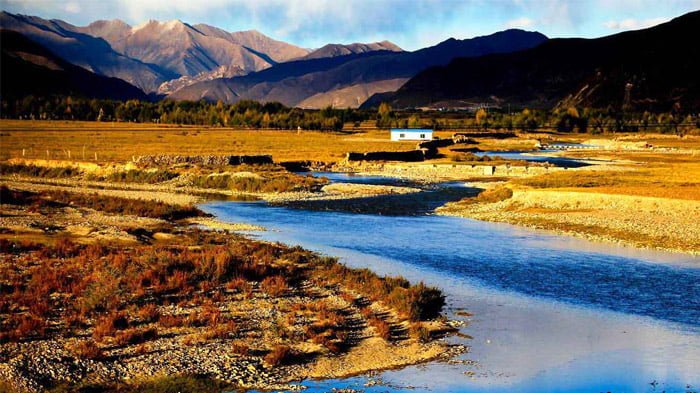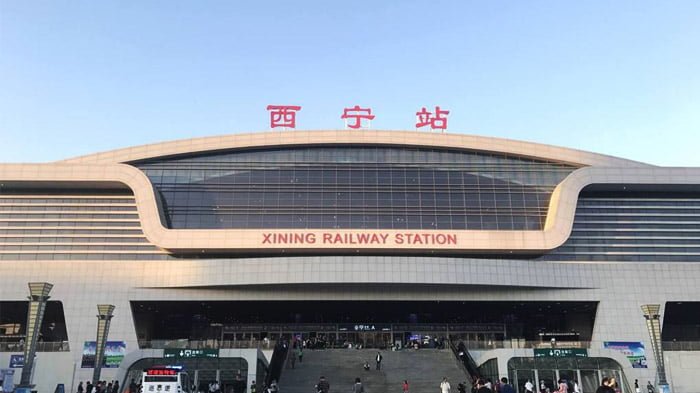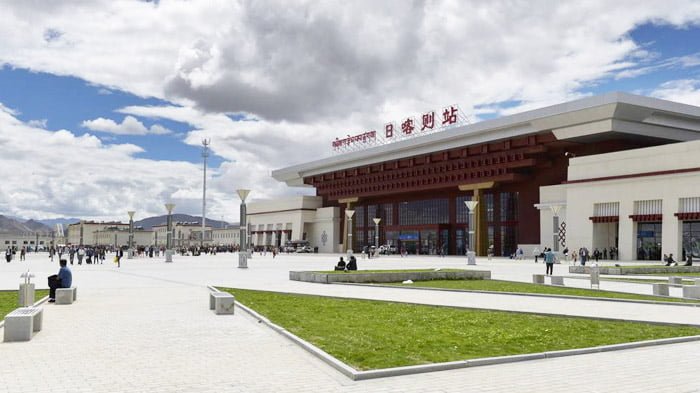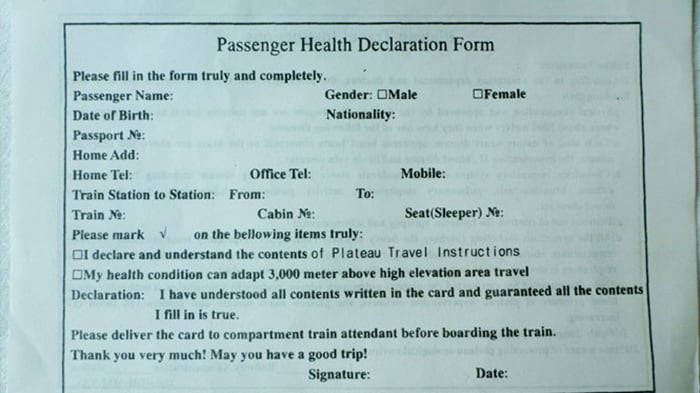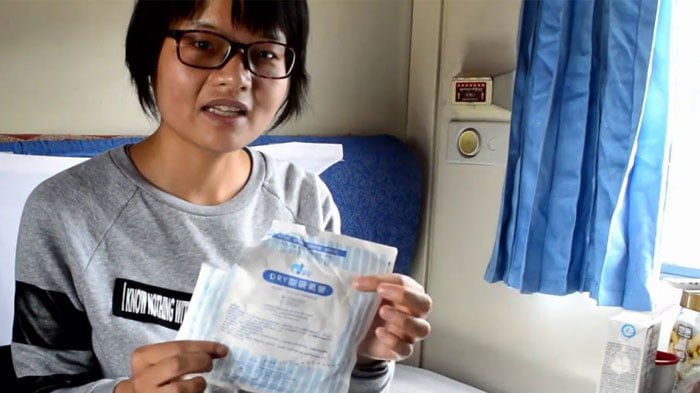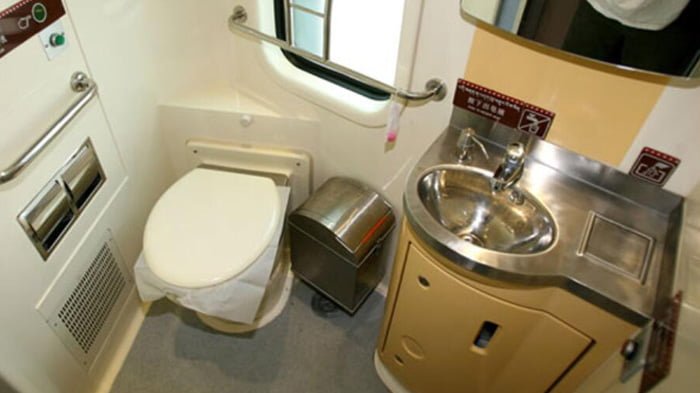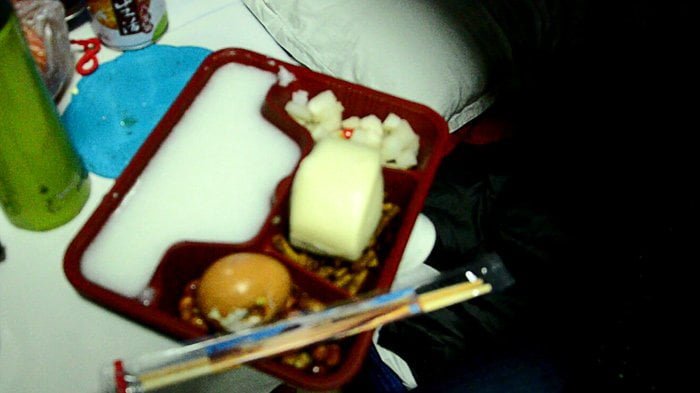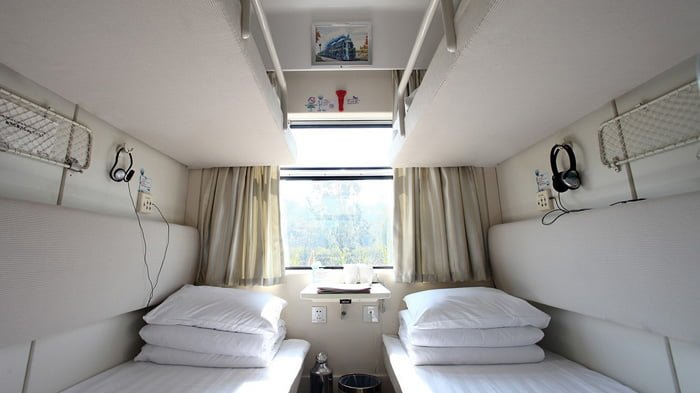Most travelers are keen on the classic Tibet train journey from Xining to Lhasa. However, there is a new train route to get to Tibet, especially the central Tibet, from Xining to Shigatse directly. From Xining, the start point of the Qinghai-Tibet Railway, the train runs southwest to cross the vast land of the northern Tibet plateau, passes through Lhasa, the capital of Tibet, and reaches to Shigatse, the second largest city at the foot of Mount Everest.
Recently, there is only one pair of trains running between Xining and Shigatse, namely, train Z6811 from Xining to Shigatse and train Z6812 from Shigatse to Xining. It takes about 24-25 hours to finish this 2220-kilometer-long Xining Shigatse train journey. There are totally 11 railway stations on the route. At some big stations, such as Golmud Railway Station and Lhasa Railway Station, the train could stop for around 20 minutes, while at other small stations, it just stops for a few minutes.
More Detailed Information about Xining to Shigatse Train
For those who take the Everest Base Camp as their final destination, the Xining Lhasa Shigatse train can make the whole EBC trip more efficient with less traveling time. The distance between Lhasa and Shigatse is about 267.8 km, which takes about 5 hours by car, while it takes no more than 3 hours by train. And you can enjoy the beautiful landscapes of the Lhasa River Valley with endless mountain hills, the Tibetan barley fields and local villages outside the window.
After Xining-Shigatse train journey, where to go?
To Mount Everest: once you arrive in Shigatse, you can travel southwards to Everest Base Camp and Rongbuk Monastery, and then drive back to Lhasa with visiting to Pelkor Monastery, Gyantse Kumbum, Korola Glacier, Yamdrok Lake, etc.
To Mainland China: for those who don’t want to return to Lhasa but mainland China, taking the train from Shigatse back to Xining is faster and more convenient without transferring to Lhasa.
To Mount Kailash and Lake Manasarovar: for those who just want to visit the west parts of Tibet, like Mt.Kailash, Manasarovar Lake, etc., it is a cheaper option to travel by train from mainland China to central Tibet directly.
To Kathmandu, Nepal: for those who are short in time but still want to experience the popular overland tour via the Sino-Nepal friendship highway from Tibet to Nepal, taking a Xining to Shigatse Train first and then enjoying the most essential parts of this overland journey from Shigatse to Kathmandu via Everest Base Camp is the best choice. The ordinary overland journey from Lhasa to Kathmandu with a day trip to Everest Base Camp takes 7 days. If you taking the Xining to Shigatse train, you just need 5 days to complete the journey to Nepal.
So the Xining Shigatse train is not only a benefit for the locals connecting to the outside world, but also a better choice for visitors to travel the center regions of Tibet.
Should I Choose Soft Sleeper or Hard Sleeper?
Like each Lhasa-bound train, the train to Shigatse from Xining is also especially built for the high altitude environment and equipped with advanced facilities, such as air-conditioning, supercharging system, oxygen supply, altitude display, etc. The train is also tightly sealed so as to firstly keep the inside air pressure normal and secondly prevent passengers from littering. Besides, all the carriages are installed with double-pane windows and ultraviolet filters to protect passengers from ultraviolet radiation. Nowadays, the train journey is extremely popular for its breathtakingly unique scenery along the railway from Xining to Tibet.
Soft sleeper is more spacious than the hard one
In fact, there are three kinds of accommodations available on Xining-Shigatse train: soft sleeper, hard sleeper, and hard seat, of which the most comfortable one is the soft sleeper. The soft sleeper consists of 4 bunks (75cm*190cm) and promises more privacy and comfort with a sliding lockable door, which is highly recommended.
While the hard sleeper is made up of 6 bunks (60cm*180cm) and the living space varies slightly. The lowest bunks enjoy the largest living space whereas the top bunks are cramped. The cabin of a hard sleeper has no independent door to close when tourists want to sleep. Hard seat is not recommended given the long ride and nothing is more important than having a sound sleep.
How to Book and Get Tibet Train Tickets?
International travelers can’t enter in Tibet as backpackers and need the help of travel agency to apply for Tibet Travel Permit in advance. You do not need the permit to book the tickets but you do need it to collect the ticket and board the train.
1. How to Book Tibet Train Ticket?
Book train ticket with us ( highly recommended)
To individual tourists, the best solution is to contact a reliable travel agency and book the Xining-Shigatse train ticket at least one month in advance.
Book at 12306.cn or buy ticket at train station
Neither method is convenient for international travelers. The 12306.cn has no English version and the online payment is limited to Chinese bank card, Wechat Pay and Alipay. The staff in train station can’t speak English. For popular route such as Xining to Shigatse train, during the peak season and even the off season of Tibet tourism, it is difficult for foreign tourists to book train tickets.
2. How to Get the Tibet Train Ticket?
In China, you need the paper train tickets to get into your train. If you book train tickets with us, you have two ways to get your paper tickets:
1. We deliver the paper tickets to your hotel or address in China (Recommended)
2. Collect them at the railway station
If you choose the delivery service, it is advisable to inform us 4 business days before departure. If you choose to collect them at the railway station, make sure to bring the confirmation number of train tickets, your Tibet Travel Permit as well as your valid and original passport. The confirmation number will be sent to you along with related train information once the tickets are confirmed, present it and the mentioned documents to the staff behind ticket windows to get paper tickets for free.
Xining Railway Station operates 24/7, but usually there are only a few ticket windows available after 11 p.m. Considering the long queues in front of the ticket window and the language barrier, it is advisable to arrive at the train station at least 2 hours before departure if you collect tickets on the same day.
Notice: Tibet Travel Permit is needed for collecting the Tibet train ticket.
3. How to Read the Train Ticket
Here are some useful phrases you may need to read Z6811 Xining to Shigatse Train ticket:
西宁站:Xining Railway Station
日喀则站: Shigatse Railway Station
xx年xx月xx日: xx Year xx Month xx Date
xx车xx号: xx Carriage xx Berth
上/ 中/ 下铺:Upper/ Middle/ Lower Berth
Information guide on Xining to Shigatse Train Ticket
How to Board the Train?
Below are the steps to board a train in China:
Step1: Fill in the Health History Form
Before boarding the train, tourists are expected to fill out an health history form. If one has illness such as hypertension, stroke, chronic respiratory problem, and other cardiovascular disease, he or she shall no board the train for one’s health concern.
Step2: Pass Security Check
After your arriving at the right railway station, line up for the security check to enter into waiting hall: present your passport, Tibet Travel Permit and train ticket to the staff, put all your luggage such backpacks, carry-on bags on the security scanner conveyor belt, and walk through a detector gate and wait for staff to use a scanner on you to check forbidden articles.
Notice: Tourists should put your luggage to the X-Ray scanner and things like gun, poison, explosive, and chemical substance, etc are strictly forbidden.
Step3: Find the Waiting Room
Once enter into the waiting hall of Xining Railway Station, you can find an LED screen showing Train Number (车次), Terminal (终到站), Departing Time (开点) and Waiting Room (候车室). Get your waiting room information and wait for check-in there. Train number Z6811 is well marked in the correct waiting room.
Step4: Board the Train
Usually check-in starts 15-30 minutes before departure and barriers close 5 minutes before departure. After check-in, you can find Led screen hang on the way to the train telling your platform (站台) and direction of your carriage (车厢). Follow the instruction and the staff waiting at the carriage gate will check your ticket again to make sure you board the right carriage of the right train.
Step5: Find Your Berth
After getting on the train, you can find your berth according to your ticket. Put your baggage on the rack overhead or under the lower berth. Your sleeper ticket will be exchanged for a plastic berth card by staff shortly after boarding. Staff will return your ticket and get back the berth card about half an hour before arriving at your destination.
FAQs:
Q1. Is it necessary to carry Tibet Travel Permit all the time?
Make sure you have your passport, Tibet Travel Permit and ticket with you as you could be checked many times during the long journey. It is also advisable to have many copies of Tibet Travel Permit.
Q2. Is it possible to swap ticket with other people to stay with friends or family in the same cabin?
Yes. It is acceptable. You may ask conductor to swap tickets with other passengers to stay with your family or friends. Do remember your cabin and seat No.
Q3. Is It Safe on the Tibet Train?
Having a ride on Qinghai-Tibet train is relatively safe as each compartment is independent and its door will automatically be closed at night. One is forbidden to enter the compartment without ticket. Of course, nowhere is safer than the compartments of soft sleeper. The cabin of soft sleeper can accommodate 4 travellers and there is a door to shut, which is the perfect choice for a family. Besides, the surveillance cameras and 24-hours police patrol make it even safer on the train.
Life Onboard
Having a ride on Qinghai-Tibet train like Xining-Shigatse route is definitely the experience of a lifetime. Besides, the long distance and pressurized train tailor-made for acclimatization of extreme altitude make the ride different from other train journey. Following tips are suggested for tourists to better enjoy the life on Xining-Shigatse train.
1. Food and Drinks
Before the departure from Xining Railway Station, do bring enough food. It could be snacks, fruit and instant noodles wrapped in bowls. Sharing snack with roommates is the easiest way to break the silence.
Dozens of tourists are having dinner in the dinning car. Tourists can order some traditional Chinese home-made dishes.
You can get 3 meals and drinks from the dining carriage located in the middle of the train. Usually only Chinese food such as noodles, dishes and soups is available and it costs about 20 CNY/meal and accepts cash payment, Wechat payment and Alipay.
The trolleys loaded with food are served in each compartment sporadically and tourists can buy from the staff of train. Besides, tourists can get free boiled water from hot water dispenser near the sinks.
2. Facilities on the Train
Toilets: The soft sleeper carriage has one western-style toilet and one squat style toilet, while hard sleeper carriage only has two squat style toilets. Toilets are located at the end of each carriage, adjacent to the washbasin, dustbin and hot water dispenser. The toilets will be locked when the train stops. Avoid to use them when the train is about to stop for arriving at a station. The red sign on the toilet door means the toilet is occupied while the green sign means not occupied. Next small but important thing is to have enough tissue or toilet paper. Because it is used fast and one won’t find any replacement if it runs out.
Washbasin: Usually only cold water is available. Tourists need to bring their own towel, wet paper tissue and toilet articles.
Dustbin: There is a big dustbin at the end of the carriage. And you can find small dustbin in each compartment and metal plate on the table along the aisle. A cleaner will sweep the floor and collect luggage from the compartment from time to time. All the waste will be disposed by train staff when arrive at stops along the way.
Hot water dispenser: There are free boiled water all the time. Bring your own water flask and get water when the light on the dispenser turns green.
FAQs:
Q1. Where to recharge your mobile phones and electronic devices?
The power plug for chargers are located in the corridors OR under your table in the cabin with the 4 soft sleepers (in between the 2 lower bunks).
Q2. Can tourists have shower in the train?
Unfortunately, there is no shower room in the train. Do bring some wet wipes in stores and a small towel. And small but equally important thing is to bring enough toilet/tissue paper.
3. Altitude Change of Xining to Shigatse Train
Xining to Shigatse Railway, measuring 2,220 km, starts from Xining (2,275m) to Shigatse (3,836m).
After Xining, the altitude starts to ascend and reaches Golmud (2,829m) at 03:28. And the altitude increases sharply by more than 1,000 meters in less than 100 kilometers, causing altitude sickness for some passengers. When arriving at the world’s highest railway pass, the Tanggula Pass (5,072m), most tourists will suffer from altitude sickness. Then, the altitude drops slowly as you travel south through Nagqu (4,500m) and reaches Lhasa (3,650m).
As the Xining-Shigatse train heads west, you’ll pass through Tibetan villages like Quxu (3,592 m), Nyemo (3,731 m), Rinbung (3,950 m) and finally arrive at Shigatse (3,836 m).
This graph gives you a rough idea of how altitude changes along Xining-Shigatse railway line
4. Altitude Sickness and Oxygen Supply
Sometimes called “mountain sickness”, altitude sickness is a group of symptoms that can strike if you walk or climb to a higher altitude too quickly. Characterized by symptoms such as headache, dizziness, fatigue,nausea, altitude sickness is the biggest concern for travelling to Tibet.
However, there is no need to be panic about altitude sickness. To better adapt to high altitude, Xining-Shigatse Train is tightly sealed and pressurized like an airplane. Therefore, smoking is not allowed. There are two sets of oxygen supply on the train: the dispersion-mode oxygen supply system operated by the train staff and the distribution-mode oxygen supply that can be connected to individual passenger through an independent port via a disposable pipe distributed by train staff. You can find the oxygen supply port in your compartment and along the aisle of each carriage.
An illustration of how to use oxygen outlet on Qinghai-Tibet train
As the train ascends to Golmud, the oxygen is automatically pumped into the train and tourists can also manually use the oxygen outlet to minimize altitude sickness symptoms such as headache, dizziness, fatigue,nausea,etc. It is advisable to bring altitude sickness medicines to ease the discomfort.
You can drink lots of water, eat light food and take a good rest to prevent high altitude sickness. It is advisable to consult the doctor for altitude sickness medicines weeks pior to the trip.
FAQs:
Q1. How to Get Help on the Train?
Some of the staff on the train speak English and they are easy-approaching and hospitable to foreign tourists. If one runs into any trouble, you may ask the head of conductor for help. Most of the passengers may have symptoms of altitude sickness (such as headache, fatigue, difficult sleeping, lack of appetite, etc.) as the train reaches Qinghai-Tibet plateau. Now, you may switch on the oxygen outlet to inhale oxygen to ease the discomfort. If the symptom gets worse, you may find the conductor for help and the doctor on the train will come and give you timely treatment.
Q2. How can we minimize the effect of altitude sickness?
The effect of altitude sickness on passengers varies. Yet, to minimize or ease the impact of altitude sickness, one may prepare some altitude sickness tablets before boarding the train and take some when the train climbs to plateau. There is no need to worry too much the altitude sickness, the train is built with oxygen supply system which is easy to use.
Q3. Is smoking allowed in the cabin?
Smoking is strictly forbidden in the train as the train is tightly sealed and pressurized and oxygen is pumped into the carriage when the train ascends to extreme altitude.It would be devastating if the train caught fire.
5. Views along Xining-Shigatse Railway
Since taking a train to Tibet is the best way to explore the Qinghai-Tibet plateau in depth, what you will actually see during the train journey is something you may want to know before you go. Here are the top attractions along Xining Shigatse railway that you cannot miss when you take the lifetime train journey to Tibet.
Qinghai Lake
The first important attraction you could see on the Tibet train from Xining to Shigatse is the Qinghai Lake, which is 150 km west to Xining city. Covering 4500 square km, Qinghai Lake is the largest salty lake in China. From the train window, you can see the lake is just like a boundless ocean. People living around Qinghai Lake are mainly Tibetan pastoralists. In some counties passing by, you can see the local pastors and farmers with traditional ethnic costumes.
Qinghai Lake
Great Mountain Ranges on the Third Pole
Qinghai Tibet Plateau, also known as the Third Pole on the Earth, is the world’s highest plateau. The train running from Xining to Shigatse via the world’s highest railway, Qinghai-Tibet Railway will pass through some of the most famous mountain ranges in Asia, such as the Kunlun Mountian, the Tanggula Mountian, and Nyenchen Tanglha Mountians. You could appreciate the endless mountain ranges with snow-capped peaks, pass through the world’s highest Tanggula Tunnel, and spend a long time for the journey through the wasteland that only the mountains ranges are with you.
Great Mountain Ranges on the Third Pole
Kekexili Nature Reserve
While entering the northwestern part of Tibetan Plateau, you will see the Kekexili Nature Reserve (also known as Hoh Xil). It is a large isolated region where no human living. However, it is home to many wild animals, especially the famous Tibetan antelope. Some other species you could see in Kekexili area include wild yak, wild Tibetan donkeys and so on. You can see these wild animals from the train window. It could be fun to wait for what the next animal you could see along the way.
Kekexili Nature Reserve
Northern Tibetan Grassland
After passing through the Tanggula Tunnel, the train enters Nagqu Prefecture, the northern part of Tibet. The scenery outside the window changes from the no man’s land to the vast grassland with doted yaks and the tents of nomads. You could also see the Qinghai-Tibet highway parallel to the railway.
Northern Tibetan Grassland
Tsonag Lake
Located 4594 meters above the sea level, Tsonag Lake is one of the highest freshwater lakes in the world. In the sun, the Tsonag Lake is like a mirror reflecting the surrounding beauty of the blue sky and surrounding snowy mountains. The lake is only a few meters away from the railway. You can just enjoy the stunning beauty of this sparkling lake from your seat onboard.
Tsonag Lake
Lhasa River Railway Bridge
Getting close to Lhasa city, the train will run across the Lhasa River Railway Bridge, a landmark of the Qinghai-Tibet railway. With the total length of 929 m, the white bridge is just like a long and big Hada crossing the Lhasa River, showing the highest respect and best wishes to travelers from all over the world.
Lhasa River Railway Bridge
Lhasa River Valley
From Lhasa to Shigatse, the train runs through the valley of Lhasa River via Qushui county and Nimu county. Outside the window, you can see the rushing Lhasa River and Yarlung Zangbo River. Different from the vast grassland and the no-man area in the early part of the journey, what you see during the section from Lhasa to Shigatse is the life of local farmers in the green barley fields at the side of the railway.
Lhasa River Valley
How to Get to the Train Stations?
Xining Railway Station
Xining Railway Station is the main railway station serving the city of Xining in Qinghai Province. It is the first station on the Qinghai-Tibet Railway which connects the city with Lhasa in Tibet.
Xining Railway Station
Address: No. 128 of Huzhu Road, Chengdong District, Xining
Phone: 86-0971-9510510
Ticket booking hotline:: 12306
Distance from Airport: Appro. 27km
Bus to there: No.1, No.3, No.11 etc
Xining Railway Station is around 8km from downtown and 27km from Xining Caojiabao International Airport (XNN). It provides luggage storage service for passengers, it costs 5-10 CNY for each piece, according to the size of your luggage. Even though there is no metro in Xining at present time, it is still convenient for tourists to arrive at Xining Railway Station by bus, taxi or airport shuttle.
From Downtown to Xining Railway Station
Taxi: Taking a taxi from downtown to Xining Railway Station takes around 24 minutes.
Bus: There are around 15 pairs of buses arriving at Xining Railway Station, such as Bus No. 1, 3, 11, etc
From Xining Caojiabao International Airport to Xining Railway Station
Xining Caojiabao International Airport (XNN) is located about 30 kilometers east of downtown Xining and 27km from Xining Railway Station. You can take a taxi or airport shuttle bus to go there.
Taxi: Usually it takes a taxi around 35 minutes from the airport to Xining Railway Station. By taking the Beijing-Tibet Highway G6, the taxi driving time can be shortened to around 25 minutes.
Airport Shuttle – Bayi Line :
Price: CNY 21.00/ person
Duration: 50 minutes
Frequency: Every hour
How to go: Get on the shuttle towards Bayi Coach Station and get off at Bayi Coach Station => walk about 440 meters to take Bus No. 105 at Huangzhongqiao Bekou and get off at West of Xining Railway Station Square. The whole ride takes around 1.5 hours.
Shigatse Railway Station
Shigatse Railway Station (Rikaze Railway Station) is the terminal station of Xining-Shigatse Train. Situated in Zhandui Village of Jiacuoxiong Township, Shigatse Railway Station is about 5km away from Shigatse downtown, 9km away from Tashilhunpo Monastery, and 248km away from Lhasa Railway Station. It has a two-story building and can be able to hold 300 people at the same time.
Shigatse Railway Station
Since international tourists cannot travel Tibet alone, Tibet Vista promise you a timely pick-up service at Shigatse Railway Station. Just tell us your travel plan and date, all the rest will be taken good care of.
Xining Shigatse EBC Kathmandu Train Tour Planning
How to Extend Xining Shigatse Train Trip to Everest and Kathmandu
Shigatse, the second largest city in Tibet, is not only a tourist site itself but also an important stop for the popular trip to Mount Everest Base Camp and Kathmandu in Nepal.
Once you arrive in Shigatse, you can stay for one or two days to have a good rest after a long train journey and visit the famous Tashilhunpo Monastery in the city. The Everest Base Camp is 243 km away from downtown Shigatse. You can get to Everest Base Camp by car, or drive to Tingri first, and then follow the trekking trail from Old Tingri to EBC. It is highly recommended to stay one night at Everest Base Camp, so that you can appreciate the charming sunset and sunrise from the top of the world. After your Everest Base Camp tour, you can either go back to Shigatse or keep going to the Gyirong Port to enter Nepal for your next journey.
Paying a visit to Everest Base Camp after Xining-Shigatse train journey
If you plan to go further to Kathmandu, the capital city of Nepal, you can travel overland along the Sino-Nepal friendship highway from Shigatse to Kathmandu via Gyirong Port. Generally, it takes about 2 days to finish this route. You can get a Visa-on-arrival at the border for your Nepal tour.
No matter where you will go next, it is important to notice that, you need to join in a local group tour, or have your private trip with the local guide and the driver from a local travel agency. As the leading member of Tibet tourism, we can help you arrange your trip in Tibet, as well as book the Tibet train ticket or flight ticket according to your need. Please feel free to contact us if you need any help to arrange your Tibet tour.
What Travel Documents Do I Need for Xining Shigatse Train Travel?
When you plan to take a train from Xining to Shigatse, you need to apply for Tibet Travel Permit at least 20 days in advance, so that you can get your train ticket and board the train to Tibet. Your passport with valid Chinese Visa is also required for travel to Tibet from Xining.
And for your trip in Shigatse, which is 268 km away from Lhasa city, our Tibetan guides and other staff will help you get the Aliens’ Travel Permit, which is required for visiting the remote areas beyond Lhasa, including the famous Everest Base Camp. For a further trip to Kathmandu, Nepal, you need to apply for Nepali Visa at the border crossing.
To apply for your Tibet travel permit, as well as other required travel documents for your Tibet tour from Xining by train, you need to book an arranged tour with a reliable local travel agency that will offer you the full tour service during your days in Tibet. According to your exact travel itinerary, you may need to obtain kinds of different permits, and our professional travel consultants will help you figure them out. Just send the application online, a quick reply will be sent to you within 24 hours.
If you are planning your trip to Shigatse from Xining by train or have any question about the traveling to Tibet by train, please feel free to contact us for Tibet train travel consultation. We are ready to help you out.

